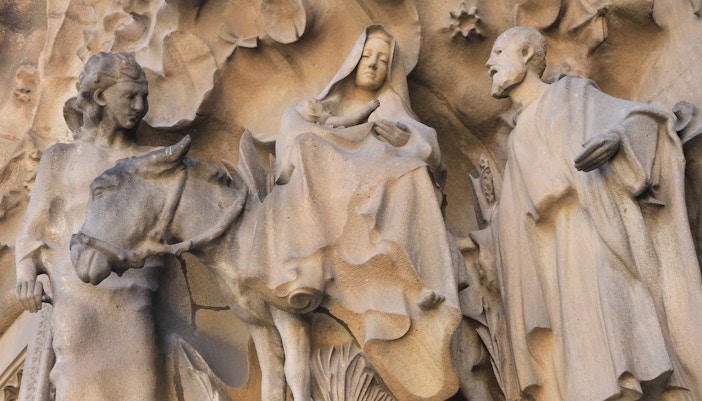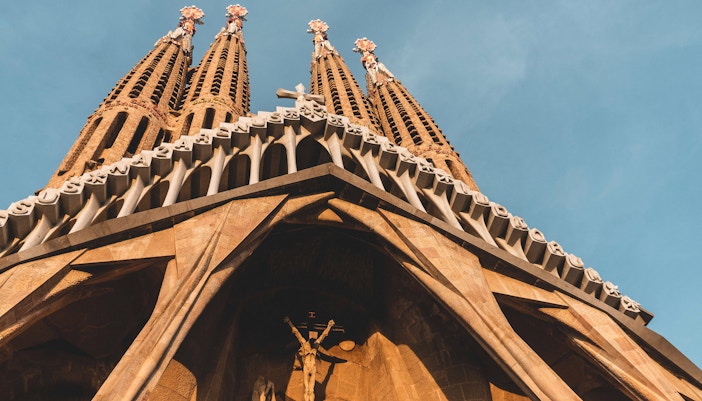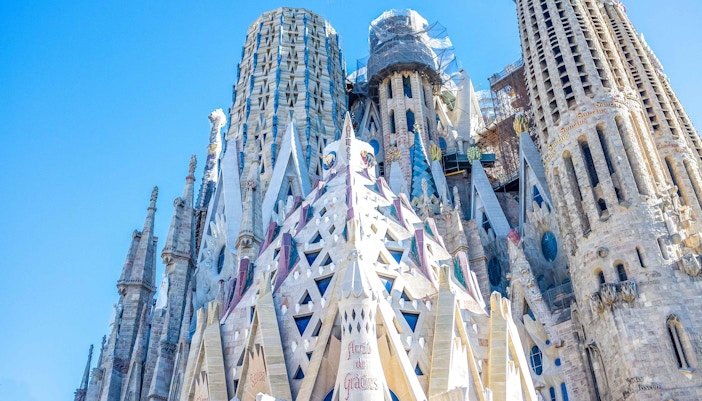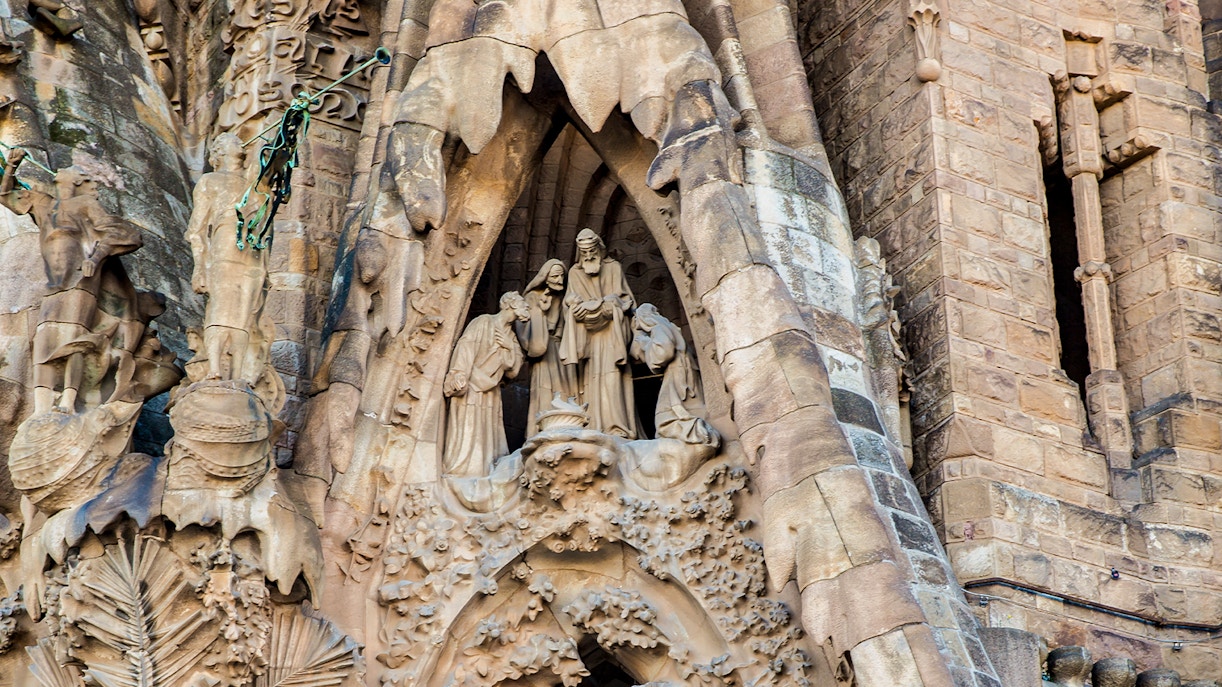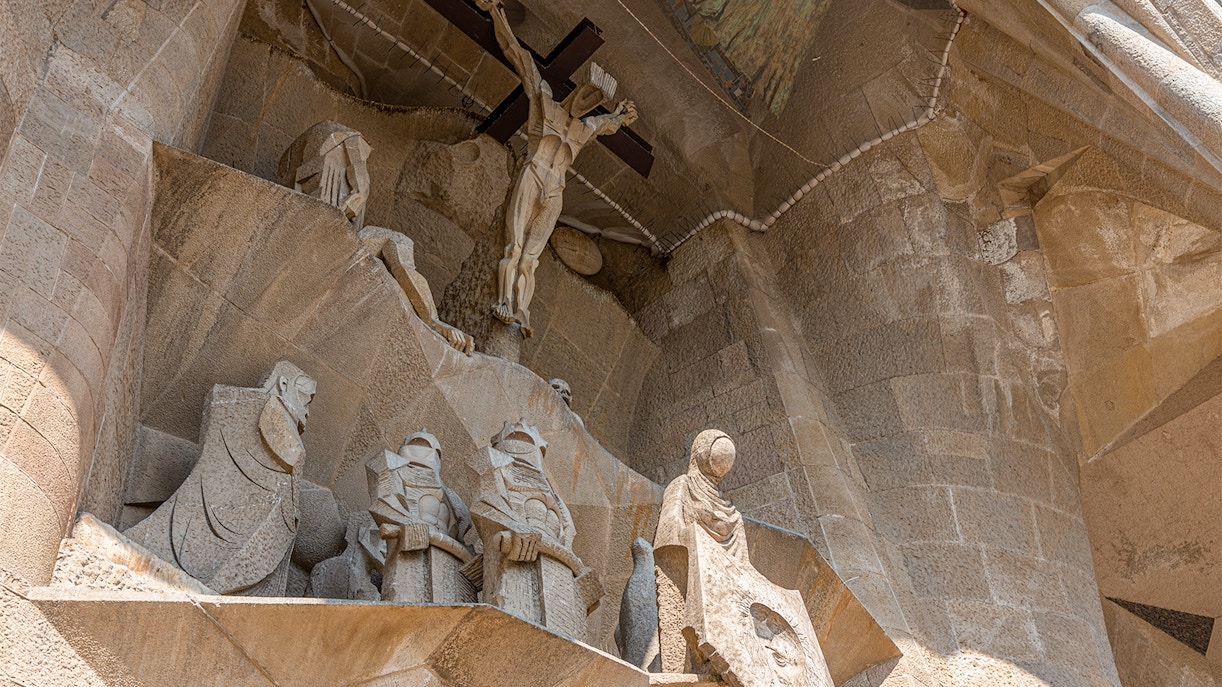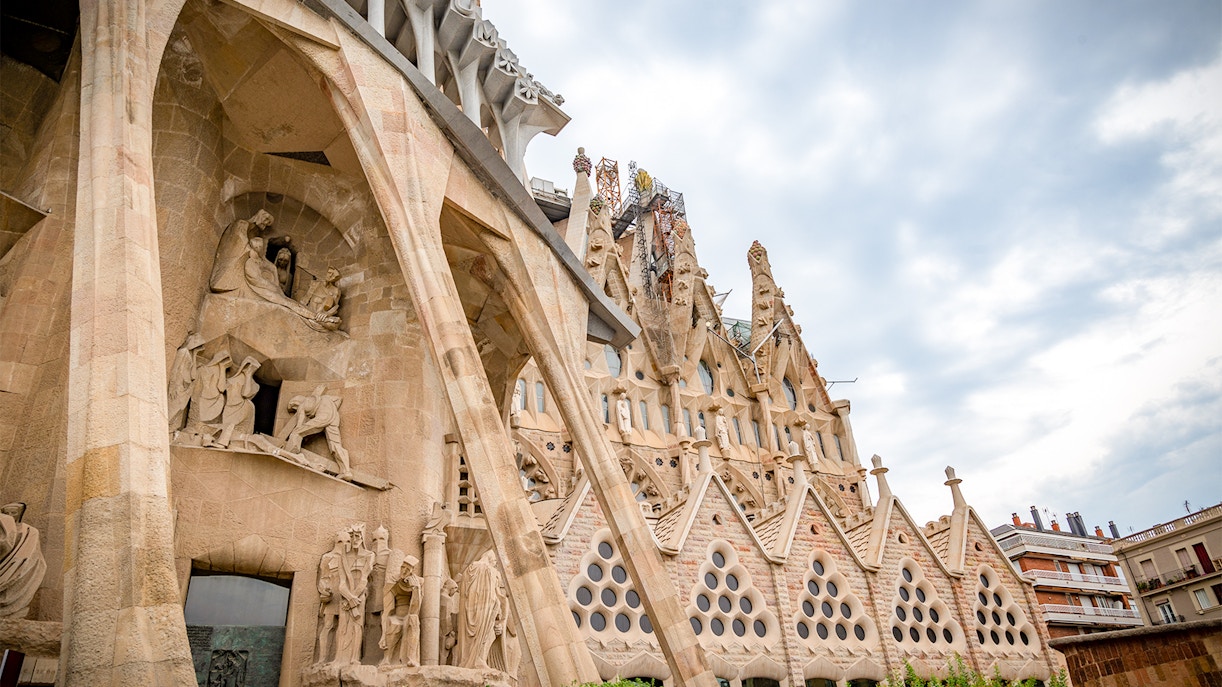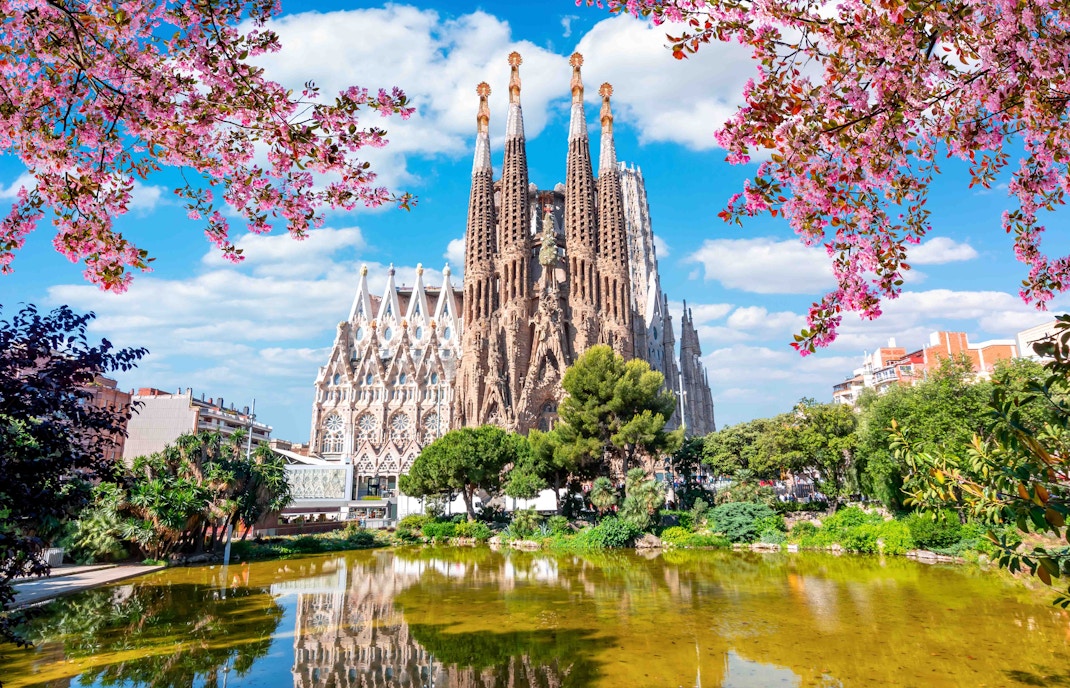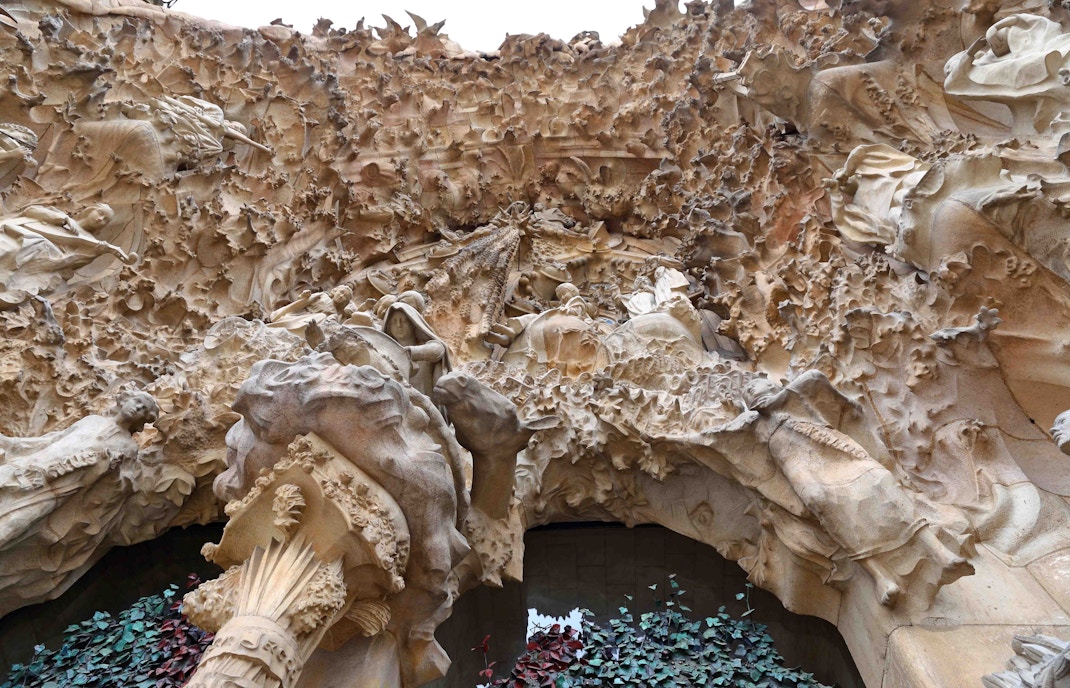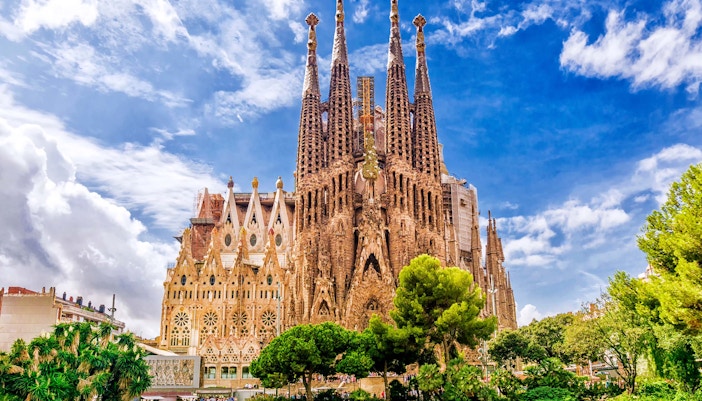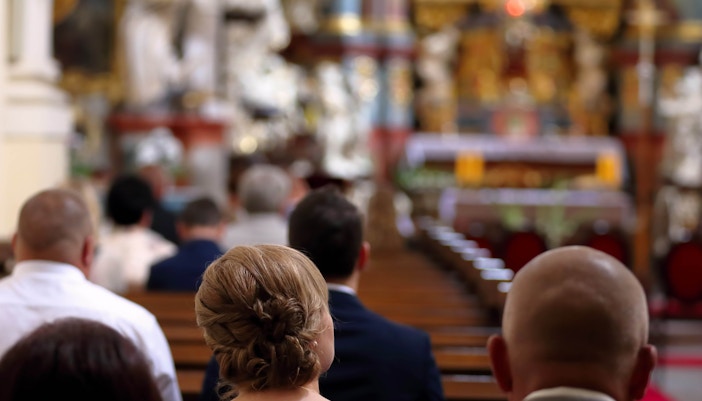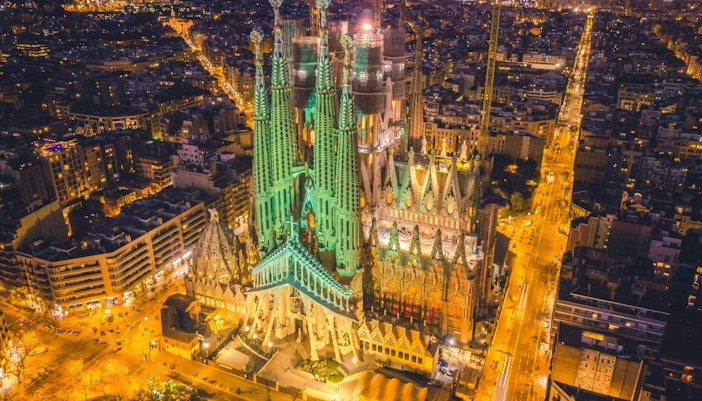A facade is a view that a few towers combine and create for the viewer. The Sagrada Familia has three major views, each dedicated to a different aspect of the life of Jesus. Of the eight complete towers, four are part of the Nativity facade, and four are part of the Passion facade
- The Nativity Facade, facing east, is the oldest among the three, and is dedicated to the birth of Jesus.
- The Passion Facade, facing west, is dedicated to Christ's Passion/death/resurrection.
- The third is the Glory Facade, facing south, which will act as the main facade of the basilica and is dedicated to the glorious nature of Jesus even after his death.
Book the tower access ticket to ride the elevator up one of the facade towers and gaze out over the sweeping views of terracotta rooftops, bustling streets, and the glittering blue Mediterranean.

